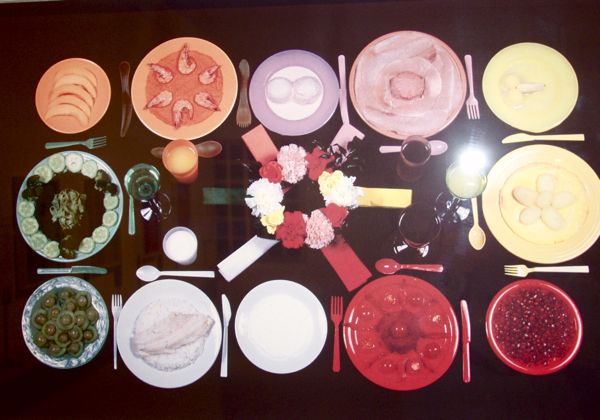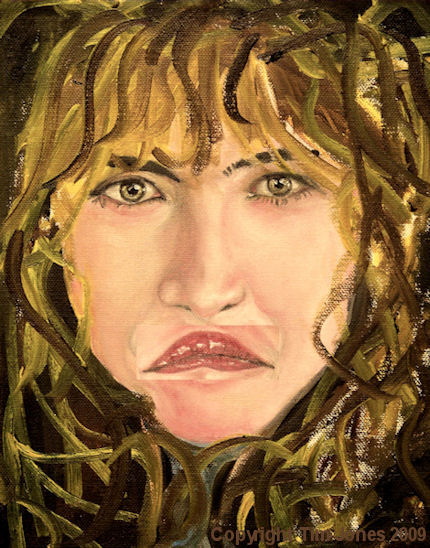This piece from last Saturday’s New York Times on food colorings and the influence of color on taste perception takes me back to a Wellcome Trust exhibition I visited in 20031

Hosted by the London Science Museum, the Treat Yourself exhibition included an artwork, ‘Chromatic Diet’, by French artist Sophie Calle, that reproduced the colour-based diet followed by a character in Calle’s book Double Game 2.
As I haven’t read it, the appeal of eating a different monochromatic dish each day of the week is beyond me. But Psychologists have for years studied the effect of colour on taste perception, exposing diners to the likes of green french fries, blue steak, and black spaghetti, sometimes under distorting lighting conditions.
And as the NYT piece underlines, for manufacturers of processed foods, colour is a powerful marketing tool.
Yet without any higher scientific motive, I like the idea of inflicting the chromatic diet (or something similar) on an unsuspecting dinner party, just to see what would happen.
O.k., probably lose some friends; but at least it’s mainly natural ingredients and looks quite doable. And having chickened out in 2003, I’m thinking in the age of Heston Blumenthal this might be the moment. Let me know what happens if you get there before me.
Here are the ingredients list for the dishes in the picture2:
Orange: Purée of carrots, Boiled prawns, Cantaloupe melon, Orange juice
Red: Tomatoes, Steak tartare, Roasted red peppers, Lalande de Pomerol, domaine de Viand, 1990, Pomegranite
White: Flounder, Potatoes, Fromage blanc, Rice, Milk
Green: Cucumber, Broccoli, Spinach, Green basil pasta, Grapes and kiwi fruit, Mint cordial
Yellow: Afghan omelette, Potato salad, Banana, mango ice cream, Pschitt fizzy lemon drink
Pink: Ham, Taramasalata, Strawberry ice cream, Rosé wine from Provence
References


